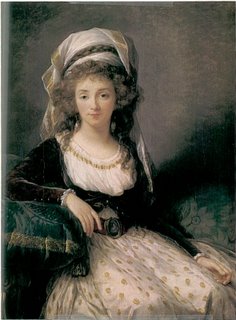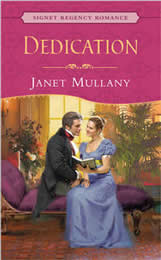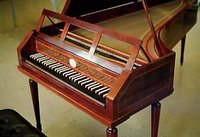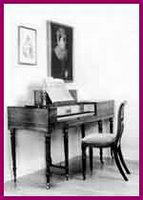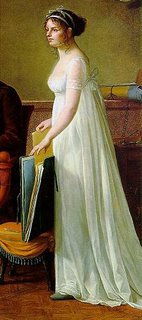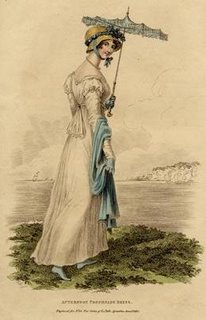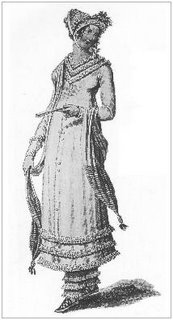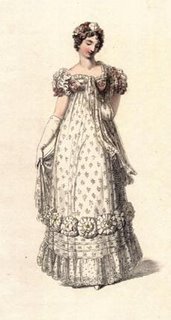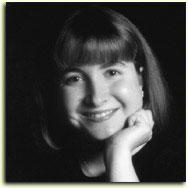 Amanda McCabe has written 11 books and a novella for Signet Regency. She’s been a finalist for the RITA, RT’s Reviewer’s Choice Award, the Daphne DuMaurier Award, Holt Medallion, and National Reader’s Choice Award. When not reading or writing romance, she loves doing needlework, taking dance lessons in ballet and flamenco, and digging through antique stores in search of new treasures. She lives in Oklahoma with two cats and a Pug dog. Learn more at ammandamccabe.tripod.com
Amanda McCabe has written 11 books and a novella for Signet Regency. She’s been a finalist for the RITA, RT’s Reviewer’s Choice Award, the Daphne DuMaurier Award, Holt Medallion, and National Reader’s Choice Award. When not reading or writing romance, she loves doing needlework, taking dance lessons in ballet and flamenco, and digging through antique stores in search of new treasures. She lives in Oklahoma with two cats and a Pug dog. Learn more at ammandamccabe.tripod.com
 Praise for A TANGLED WEB!
Praise for A TANGLED WEB!
“McCabe does a terrific job with this simple story of love, rank and a bit of deceit in, quite possibly, the last of our traditional Regencies. ” Romantic Times, 4 1/2 Stars!
The Interview
Q. How did you think of writing this particular book? Did it start with a character, a setting, or some other element?
It actually started with the PBS show “Regency House Party”! I loved the interaction of the various “characters”, and what happens when you throw different types of people into close proximity for an extended period of time. So, A TANGLED WEB is sort of “Regency House Party” crossed with “Persuasion.”
Q. How long did it take? Was this an easy or difficult book to write?
It took about three weeks. And I will NEVER do a book so quickly again! The publisher needed the manuscript in a hurry to get it into production, so I worked much longer hours than I usually do on a book. The characters didn’t help me at all, either. Some of them refused to follow my careful house party matchmaking, and kept switching partners on me!
Q. Tell me more about your characters. What or who inspired them?
There are four couples altogether. The main one, the hero and heroine, are my “Persuasion” couple. Diana and Tom were in love when they were young, but as she was an earl’s daughter and he was a tenant’s son, they were kept apart by her ambitious family. He went off to Canada to seek his fortune, and she married and was widowed. But they never forgot each other. One couple is quite villainous, and the other two are young people in love (the ones who could not decide who they really love!). We have Diana’s shy younger sister, her beautiful and flamboyant best friend, the bookish duke’s son, and the handsome n’er do well. Who will end up with whom??? And then there is their hostess, Diana’s mischevious Aunt Mary, who is quite delighted by all the romantic turmoil she’s caused. It was so much fun to work with all of them, even when they were being stubborn!
Q. Did you run across anything new and unusual while researching this book?
I had to research the history of Canada (or British North America) in this period, something I hadn’t really looked at for any other project. Tom spent a great deal of time out in the wilderness and in small trading communities, where the amenities were rough. But his mother, who went to Canada with him (and now wants him to marry well, since he’s rich!), lived in Toronto, or York, and it was quite a comfortable and civilized place. I learned a great deal that I didn’t know before.
Q. What do you think is the greatest creative risk you’ve taken in this book? How do you feel about it?
Hmmm-this doesn’t seem like an especially “risky” story, since I had to get it done in such a hurry! But my hero isn’t a duke or earl, he has no title at all, and he made his own way in the world. I liked him so much, both for the fact that he built a fortune on his own wits and adventurous spirit, and for the fact that he loved Diana for so long and tried so hard to be “worthy” of her.
Q. Is there anything you wanted to include in the book that you (or your CPs or editor) felt was too controversial and left out?
Originally, in my mind, the villainous couple caused even more trouble, but in the end there just wasn’t enough room to include all their machinations! But hopefully they get what they deserve in their future lives.
Q. What are you working on now?
A historical fiction story set in Florence in the 1470s. The research has been fascinting! I also have an idea for a new romance series, titled “Villains, inc.” So, stay tuned!
